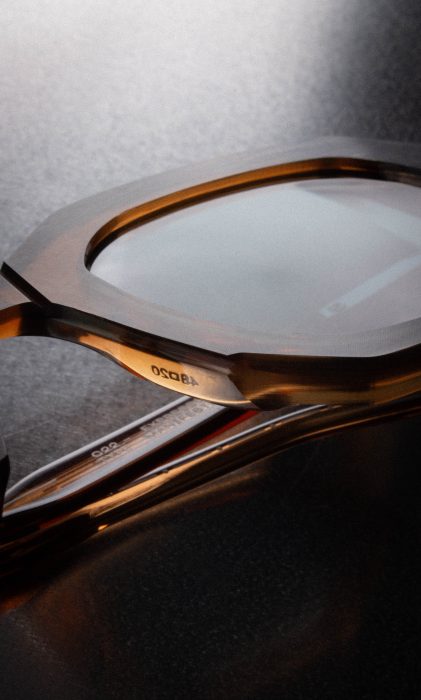
The best performance, from the highest peaks down to the corner of your street. /
À partir de février 2025, RADIANCE équipe l’ensemble de notre collection solaire.
Nos lunettes solaires sont conçues pour une mission : vous offrir une protection optimale dans toutes les situations.
C’est dans cette quête de perfection que nous avons développé, en collaboration avec Divel, les verres polarisants Radiance.
Testés dans les conditions les plus difficiles, ils offrent des performances inégalées et vous protègent où que vous soyez, des plus hauts sommets jusqu’au coin de votre rue.
Nous avons spécialement développé leur teinte afin de reproduire parfaitement les couleurs de votre environnement, de vous offrir le meilleur contraste et reposer votre œil.
Ils contiennent une protection anti-rayure, un antireflet et un filtre polarisant. Injectés à la forme, ils offrent une qualité optique parfaite.
Bienvenue dans le futur.
From February 2025 onwards, RADIANCE will equip our entire solar collection.
Our sunglasses are designed with one mission in mind: to offer you optimum protection in every situation.
It was in this quest for perfection that we developed Radiance polarized lenses in collaboration with Divel.
Tested in the toughest conditions, they offer unrivalled performance and protect you anywhere you stand, from the highest peaks down to the corder of your street.
We’ve specially developed their tints to perfectly reproduce the colors of your environment, giving you the best contrast and resting your eye.
They feature anti-scratch, anti-reflective protection and a polarizing filter. Shape-injected, they offer perfect optical quality.
Welcome to the future.
Caractéristiques techniques /
Technical features
Matière : organique CR39
Nombre d’Abbé : 58
Protection UV : 400 nm
Anti-reflet : multicouche en face interne.
Anti-rayures : face interne et externe.
Anti-poussière : face interne et externe.
Couleur : bleu indicolite. Réduction de la fatigue oculaire et amélioration des contrastes.
Conforme aux normes :
ISO 12312-1:2013/Amd.1:2015 (norme internationale)
ANSI Z80.3-2018 (norme américaine)
AS/NZS 1067.1:2016 (norme australienne/néo-zélandaise)
Material: organic CR39
Abbe Number: 58
UV protection: 400 nm
Anti-reflective: multi-layer inner surface.
Anti-scratch: inside and outside.
Anti-dust: inside and outside.
Color: indicolite blue. Reduces eye fatigue and improves contrast.
Complies with :
ISO 12312-1:2013/Amd.1:2015 (international standard)
ANSI Z80.3-2018 (American standard)
AS/NZS 1067.1:2016 (Australian/New Zealand standard)
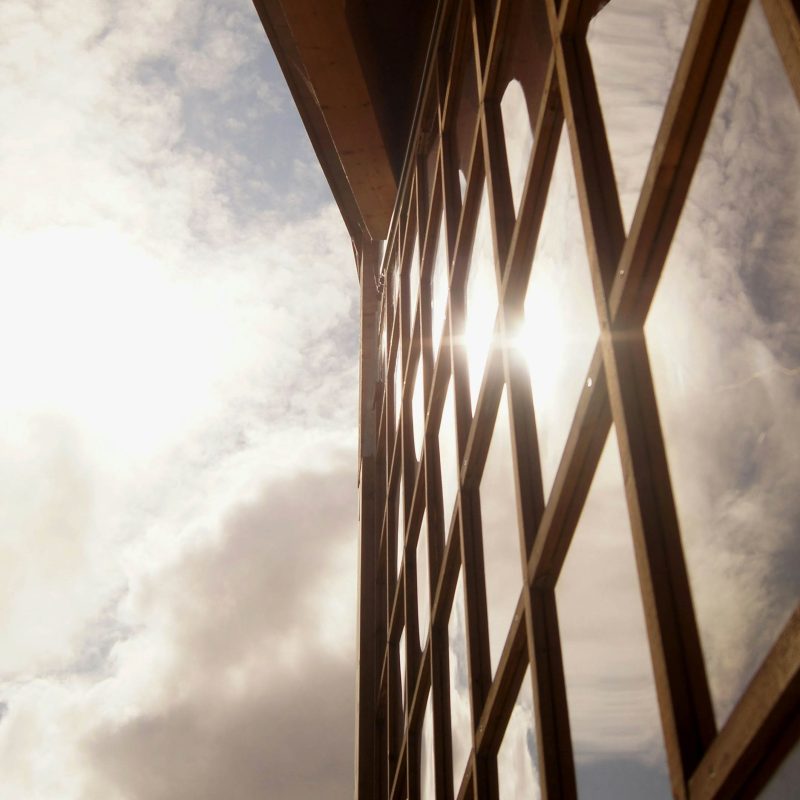
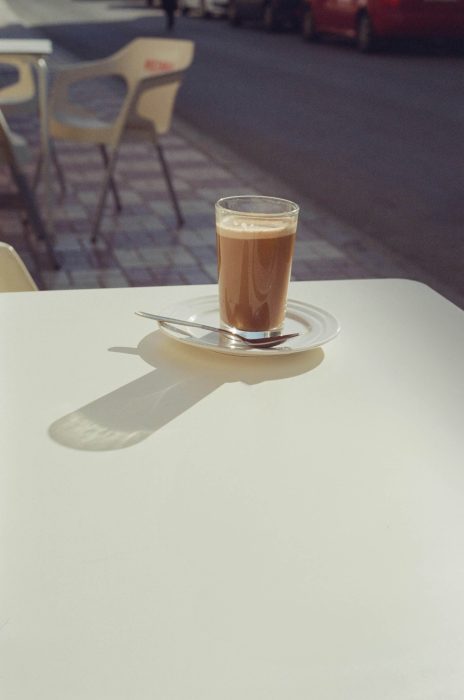
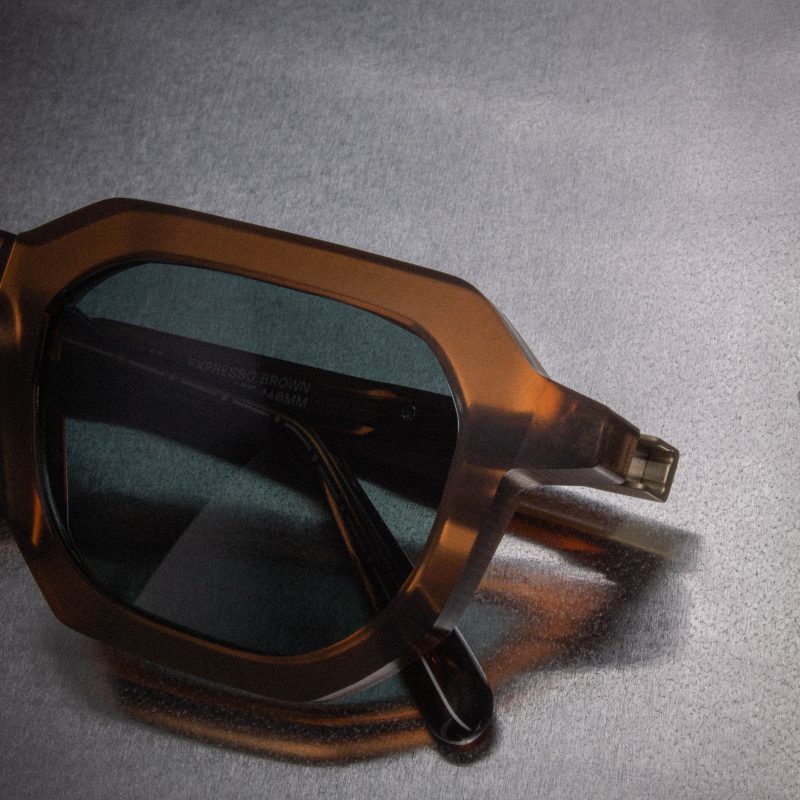
APEX TITANIUM
A hinge system designed for the most demanding users looking for a technical and durable product without compromising their style. At the cutting edge of technology, additive manufacturing enables production without material waste, limiting the ecological impact of our processes.
The use of titanium and PVD treatment guarantees unrivalled strength and durability.
Design, assembly and mounting: France
Titanium Printing: Germany
PVD: Italy

1 : acetate front
2 : resin washer
3 : titanium front hinge
4 : torx M1.6 screw
5 : resin washer
6 : titanium shell
7 : titanium core
8 : acetate temple

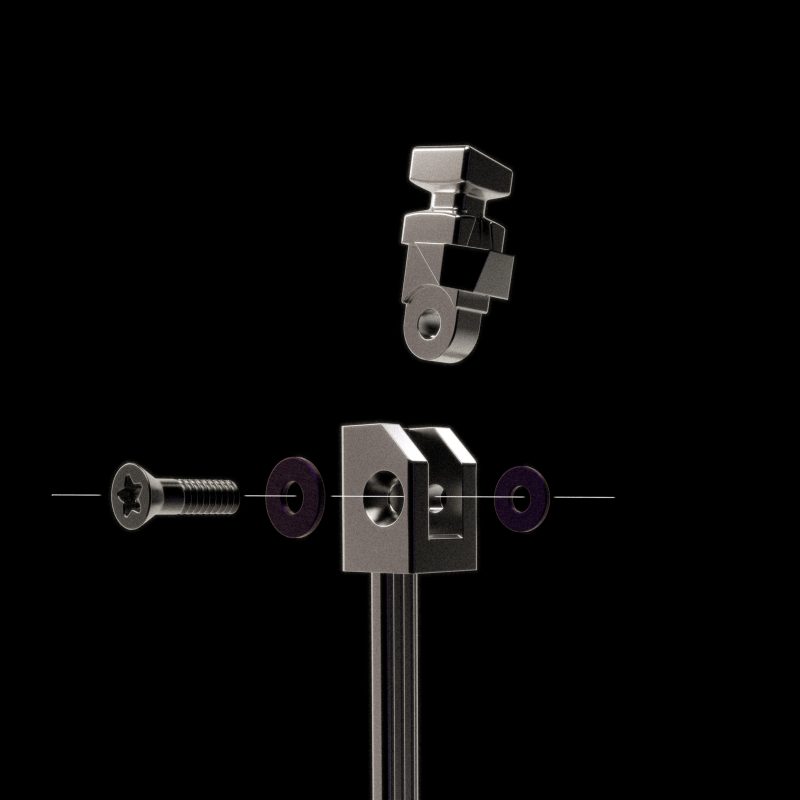

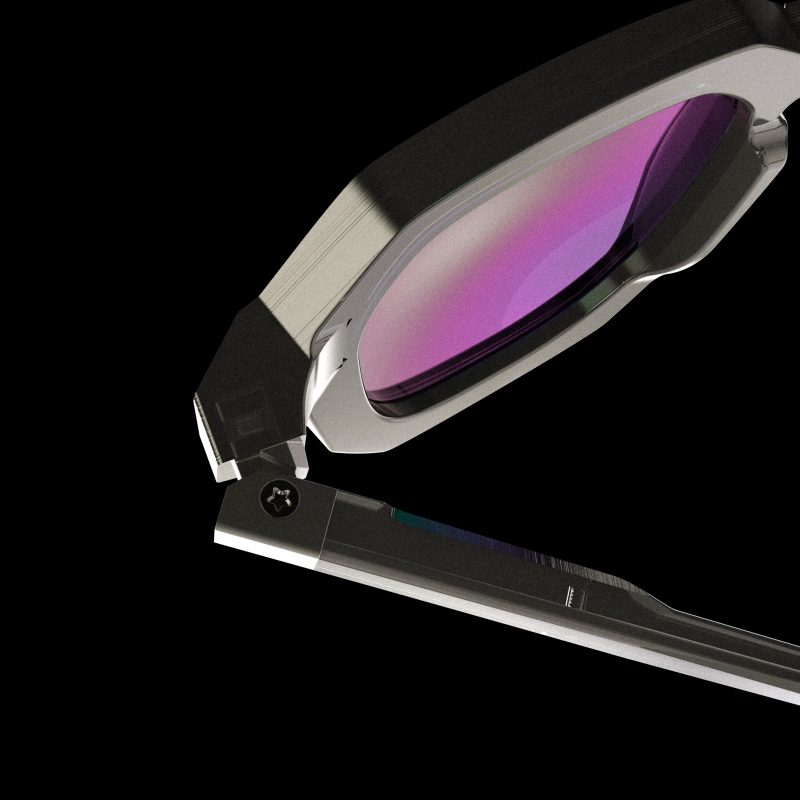
Merci pour votre confiance et votre achat.
Ludivine est la responsable de notre atelier à Oyonnax. Tous les jours, elle veille à ce que nos produits répondent aux plus hauts standards de qualité et de durabilité.
C’est pour cela que nous pouvons livrer chacune de nos montures avec une garantie contre tout défaut de fabrication de 2 ans. Nos charnières DynaOne et APEX sont, elles, garanties à vie.
Agir de façon responsable, c’est aussi prolonger la durée de vie des produits que nous achetons, y compris cette paire de lunettes. Si vous avez des questions sur l’entretien de nos montures, n’hésitez pas à nous contacter.
Thank you for your order and trust.
Ludivine is in charge of our workshop in Oyonnax. Every day, she ensures that our products meet the highest standards of quality and sustainability.
That iss why we can deliver every one of our frames with a 2-year guarantee against manufacturing defects. Our innovative DynaOne and APEX hinges come with a lifetime guarantee.
Acting responsibly also means extending the life of the products we buy, and that also means your frames. If you have any questions about the care of our frames, please don’t hesitate to contact us.
Nous faisons ce que nous aimons /
We do what we love
Chaque monture BAARS est réalisée à la main en France. Elle passe par plus de 20 points de contrôle avant d’être stockée dans notre atelier.
Lors d’une commande, et pour garantir l’entière satisfaction de nos partenaires, chaque monture est revérifiée et passe à nouveau par plus de 20 étapes avant d’être mise en colis et expédiée.
Ce procédé rigoureux nous garantit que le colis que vous recevez est conforme à nos valeurs.
Nos montures « Manifeste » sont livrées directement après usinage. Leur surface se patine avec le temps et renforce leur caractère brut.
Pour nettoyer les surfaces mates de nos montures « Manifeste », nous conseillons l’utilisation d’une gomme blanche standard. Pour effacer les micro-rayures, nous recommandons l’usage de la gomme “Universal Schleifreiniger 80 x 50 x 20 mm – K 30“.
Si vous avez des questions sur un colis que vous venez de recevoir, n’hésitez pas à nous contacter.
Each BAARS frame is handmade in France. It goes through more than 20 checkpoints before being stored in our workshop.
When an order is placed, and to guarantee the complete satisfaction of our clients, each frame is checked again and goes through more than 20 stages before being packed and dispatched.
This rigorous process guarantees that the package you receive is in line with our values.
Our “Manifeste” frames are delivered rough machined. Their surface develops a patina over time, reinforcing their raw aspect.
To clean the rough surface of our “Manifeste” frames, we recommend using a standard eraser. To remove micro-scratches, we recommend using the eraser “Universal Schleifreiniger 80 x 50 x 20 mm – K 30“.
If you have any questions about a package you have just received, please do not hesitate to contact us.
Polissage de finition sur une monture.
Finishing polish on a frame.

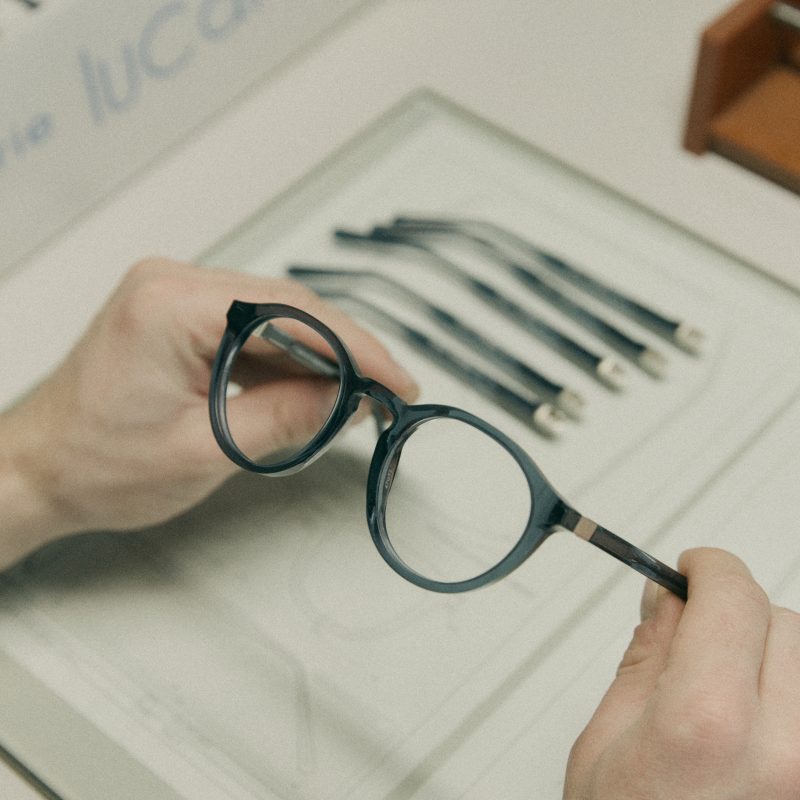
Contrôle qualité : Étape de vérification des galbes et angles.
Quality control: checking curves and angles.
Stock de pièces détachées.
Spare parts in stock.
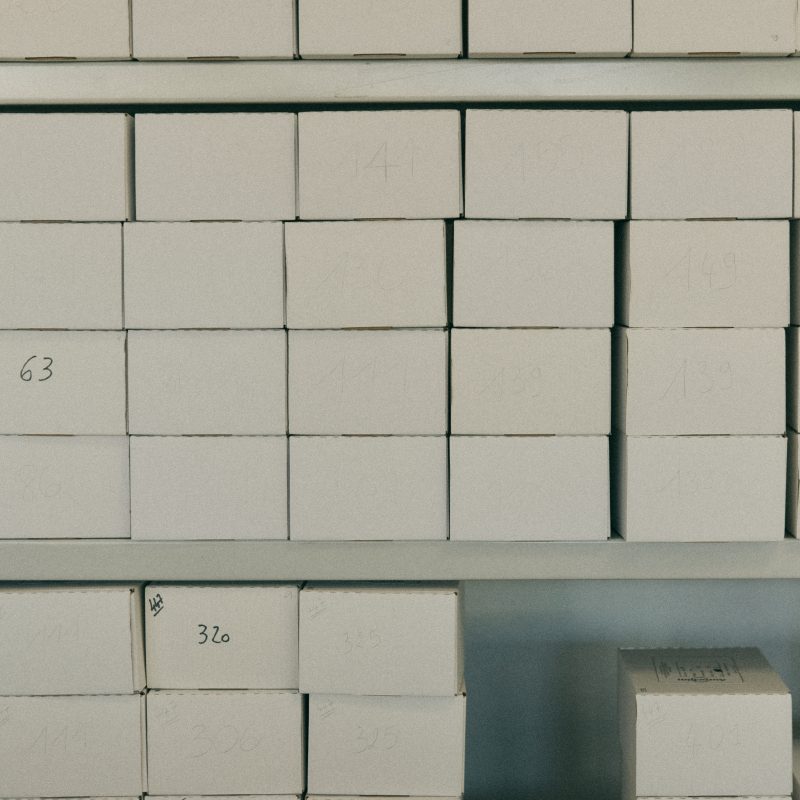
Notre engagement pour l’innovation / Our commitment to innovation.
En 2015, avec la marque BAARS, naît DynaOne, une charnière brevetée simplissime, imaginée pour simplifier la vie de nos utilisateurs, porteurs et opticiens.
En 2017, nous la faisons évoluer pour en proposer une version plus compacte.
Depuis 2020, inspiré par le techwear, nous livrons chaque monture avec un étui soft-shell ultra fonctionnel, étanche, facilement transportable et accrochable.
Enfin en 2023 nous présentons Dyna-Lock, pour vous accompagner dans toutes vos aventures.
Cette volonté de repenser la lunetterie, ses accessoires et ses services pour mieux correspondre à notre époque se poursuit en 2024 avec l’arrivée de la matrice de collection Manifeste…
In 2015, with BAARS, we launched DynaOne, a patented hinge designed to make life easier for our users, both wearers and opticians.
In 2017, we upgraded it to offer a more compact version.
Since 2020, inspired by techwear, we’ve been delivering each frame with an ultra-functional soft-shell case that’s waterproof, easy to carry and easy to hang.
Finally, in 2023, we’re introducing Dyna-Lock, to support you on all your adventures.
This desire to rethink eyewear, its accessories and its services to better suit our times continues in 2024 with the arrival of the Manifeste collection matrix…
Matrice : nom féminin (latin matrix, -icis). Arrangement ordonné d’un ensemble d’éléments, sous forme d’un tableau à double entrée comportant, dans le cas général, n lignes et m colonnes.
Matrix : noun. A rectangular array of quantities or expressions in rows and columns that is treated as a single entity and manipulated according to particular rules.
Le concept /
The concept
Le projet de construction d’une matrice de collection part d’une idée simple: créer une symbiose entre notre collection et le quotidien de nos partenaires opticiens. Cette volonté d’installer une continuité entre notre travail et celui de nos partenaires passe par trois vecteurs:
- Faciliter l’identification de styles, correspondant à des visages et des personnalités.
- Proposer des déclinaisons de taille permettant de s’adapter à toutes les morphologies et corrections.
- Rendre l’ensemble clair, simple et universel.
The project to build a collection matrix is based on a simple idea: to create a symbiosis between our collection and the daily lives of our optician partners .This desire to establish continuity between our work and the work of our partners is achieved in three ways:
- Making it easier to identify styles, corresponding to faces and personalities.
- Offering a range of sizes to suit all morphologies and corrections.
- Making everything clear, simple and universal.
Colonnes = Visions /
Columns = Visions
Chaque Colonne représente une famille de produits qui partage une même inspiration stylistique. Ces familles nous les appelons des visions. Chaque vision à des caractéristiques qui lui sont propres et la différencie des autres. Pour que le nom de chaque famille soit compréhensible dans toutes les langues, nous avons choisi d’attribuer à chacune une lettre de l’alphabet aéronautique international.
Each column represents a product family that shares a common stylistic inspiration. We call these families visions. Each vision has its own unique characteristics that set it apart from the others. To make the name of each family comprehensible in all languages, we have chosen to assign each one a letter of the international aeronautical alphabet.
Alpha regroupe des montures aux verres arrondis, au nez clef et au tenon à mi-hauteur. De part ses formes et son nez clef, c’est une vision qui a un posé unniversel.
Alpha is a range of frames with rounded lenses, a key bridge and a half-height en piece. With its shape and key nose, it’s a vision with a universal fit.
Delta regroupe des montures aux verres rectangulaires, au nez selle et tenon à mi-hauteur. C’est un choix naturel pour quelqu’un recherchant une monture anguleuse ou ayant un visage rond. Le nez selle permet un confort sans égal.
Delta is a range of frames with rectangular lenses, a saddle bridge and half-height en piece. It’s a natural choice for someone looking for an angular frame or with a round face. The saddle bridge provides unrivalled comfort.
Sierra regroupe des montures aux verres carrés, au nez clef et au tenon à mi-hauteur. C’est un choix naturel pour quelqu’un recherchant une monture anguleuse. Le nez clef permet un fit plus unniversel.
Sierra is a range of frames with sqaure lenses, a key bridge and a half-height en piece. It’s a natural choice for someone looking for an angular frame or with a round face. The key bridge allow an universal fit.
Chaque vision existe en plusieurs formats. Each vision is available in a range of formats.
Lignes = Formats /
Lines = Formats
Chaque ligne représente un format différent des visions. Ces formats sont pensés pour couvrir des besoins : taille de verre, taille de tenons, hauteur de verre. Les formats sont pour le moment au nombre de quatre:
Nano : Petits verres.Abréviation “N”
Tera : Verres de taille moyenne. Abréviation “T”
Air : Grands verres. Abréviation “R”
Iso : Verre bas. Abréviation “X”
Exemple : La vision Delta, est pour le moment disponible en deux formats:
- Air : Avec des verres de 51. Son nom complet est donc Delta-R
- Iso : Avec des verres bas. Son nom complet est donc Delta-X
Each line represents a different format. These formats are designed to meet specific needs: lens size, end piece size, lens height. There are currently four formats:
Nano: Small lenses. Abbreviation “N“.
Tera : Medium-sized lenses. Abbreviation “T“
Air: Large lenses. Abbreviation “R“
Iso: Low lenses. Abbreviation “X“
Example: Delta Vision is currently available in two formats:
- Air: With 51 mm lenses. Its full name is therefore Delta-R
- Iso: With low-profile lenses. Its full name is Delta-X
La Matrice /
The Matrix
La matrice évoluera avec l’enrichissement de la collection Manifeste. En voici une représentation visuelle suite à OPTI 2024.
The matrix will evolve as the Manifeste collection grows. Here is a visual representation following OPTI 2024.
Manifeste : Écrit public par lequel un chef d’État, un gouvernement, un parti, une entreprise etc., rend compte de son mandat ou expose son programme, son point de vue.
Début 2023, BAARS introduit un nouveau projet clef dans son développement, au croisement de nos origines parisiennes, notre culture architecturale et notre savoir-faire unique. Il se nomme : « Manifeste ».
Sur le fond, c’est une vitrine et un hommage à notre fabrication locale, une déclaration d’amour pour Paris et plus spécialement pour le Centre Pompidou. Sur la forme, Manifeste annonce la direction artistique de BAARS pour les années à venir. Elle se caractérise par un travail sur les textures mates, brillantes et sur les volumes. Manifeste sera présenté pour la première fois à OPTI 2023, à Munich. Le début de son histoire remonte à la fin du XIX siècle, ici, à Paris.
In early 2023, BAARS will introduce a new key project in its development. At the crossroads of our Parisian origins, our architectural culture and our unique know-how, this project is called Manifeste. In terms of concept, it is a showcase of and a tribute to our local craftsmanship, a love letter to Paris and more specifically to the Pompidou Centre. In form, Manifeste outlines BAARS’ artistic direction for the years to come. Of note, is the extensive thought given to matt and glossy textures, as well as volumes. While Manifeste will be presented for the first time at OPTI 2023 in Munich, its history starts at the end of the 19th century, here in Paris.
1891 /
Après l’annexion de ses faubourgs et l’exode rural, Paris voit sa population exploser. Elle compte désormais plus de 2,5 millions d’habitants.
L’étroitesse des voies de circulation par rapport à la hauteur des immeubles et la phénoménale densité de population dégradent fortement la propreté de Paris. La tuberculose se propage.
Dans ce contexte difficile, Paul Juillerat, alors chef du service d’hygiène de la capitale, finalise son enquête sur les conditions de vie en son sein. Ses conclusions sont accablantes et donnent lieu à un concept nouveau : l’identification de zones appelées « îlots insalubres », nécessitant une attention toute particulière.
Nous sommes alors début 1900 et leur nombre s’élève à six. Il ne fera que monter pour atteindre 17 au moment où la Première Guerre mondiale éclate. Malgré des conditions de vie désastreuses, leur réfection traîne.
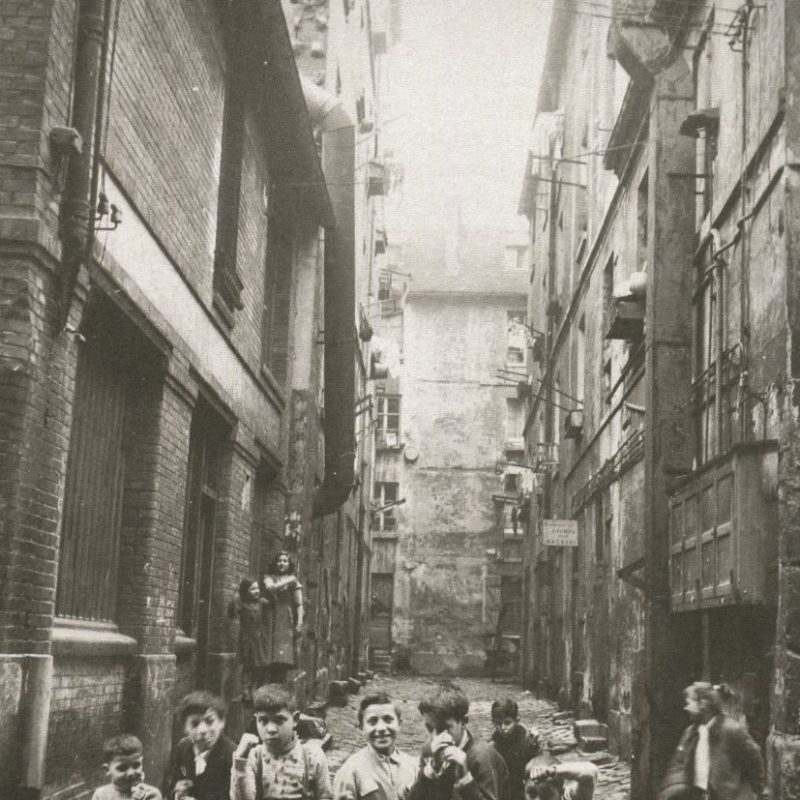
After the city annexed its suburbs and after the rural exodus, the population of Paris swole to over 2.5 millions. The narrow width of the streets in relation to the height of the buildings and the phenomenal population density severely increased the squalor of Paris. Tuberculosis is spreading like fire.
In this difficult context, Paul Juillerat, then head of the capital’s hygiene department, completed his investigation into the living conditions in the city. His conclusions were overwhelming and gave rise to a new concept: the identification of areas called “îlots insalubre” (“unsanitary islets”) which called for an urgent solution. At the beginning of 1900, there were six of them. This number would increase to 17 by the time the First World War broke out. Despite the disastrous living conditions, their rehabilitation lagged behind.
1969 /
Grand saut en avant : Georges Pompidou vient d’être élu président. Les évènements de mai 1968 viennent tout juste de se terminer et un vent nouveau, une envie de rupture et de créativité flottent sur la capitale. Pompidou, passionné d’art moderne, lance l’idée de créer un centre culturel dans Paris. Il s’inspire du succès d’initiatives similaires aux États-Unis et énonce sa vision : « Un lieu de création, où les arts plastiques voisineraient [sic] avec la musique, le cinéma, les livres, la recherche audiovisuelle ».
Pour son implantation, le lieu est vite trouvé : le plateau Beaubourg, à l’une des extrémités du quartier du Marais. Là où se tenait l’îlot insalubre n°1, rasé dans les années 30, se trouve alors un gigantesque parking sauvage.
Fast forward to 1969 when Georges Pompidou was just elected President of France. The events of May 1968 recently ended and a wind of change, a desire for a break with the past and for creativity, was blowing through the capital. Pompidou, who was passionate about modern art, launched the idea of creating a cultural center in Paris.
Inspired by the success of similar projects in the United States he set out his vision: “a place of creation, where the plastic arts would rub shoulders with music, cinema, books and audiovisual research”. To house such a center, everyone quickly agrees on the location of the former unsanitary islet number one. Destroyed in the 1930s, in its stead was now a gaping hole in the middle of Paris, in the so-called “Plateau Beaubourg”. What would later become one of the bustling ends of the Marais district was then just a large car park.
Pour la réalisation de l’ouvrage, un concours international d’architecture présidé par Jean Prouvé est lancé. Le cahier des charges : créer un bâtiment qui devra répondre aux exigences de pluridisciplinarité, de libre circulation et d’ouverture des espaces d’exposition. Des 681 candidatures émises, deux noms ressortent vainqueurs : Renzo Piano et Richard Rogers, respectivement 34 et 38 ans.
Leur proposition est aussi clivante que novatrice. Elle se constitue d’une part d’une grande place, appelée piazza, en référence à sa source d’inspiration : le Forum Romain. D’autre part, du bâtiment en lui-même, transparent et ouvert sur la ville.
La part belle est laissée au contenu plutôt qu’au contenant. Est imaginée une construction composée de grands plateaux libres et modulables pour répondre aux besoins des expositions, à l’extérieur desquels sont relayés tous les éléments mécaniques et techniques.
Poteaux, gerberettes, gaines de ventilation, accès… tout ce qui est habituellement caché se présente là, aux yeux de tous. Pour aller plus loin encore et quitte à frôler la provocation, chaque élément reprend un code couleur fort : les tuyaux pour la ventilation sont bleus, ceux pour l’eau, verts. L’électricité et la circulation des personnes se voient attribuer respectivement le jaune et le rouge. Cerise sur le gâteau, la rampe d’accès aux étages qui traverse toute la façade du bâtiment deviendra le logo du centre !
An international architectural competition, chaired by Jean Prouvé, is launched for the construction of the center. The specifications: to create a building that would meet the needs for multidisciplinarity, free circulation and open exhibition spaces. Of the 681 applications submitted, two names emerged as the winners: Renzo Piano and Richard Rogers, aged 34 and 38 respectively. Their proposal is as disruptive as it is dividing.
It consists of two parts: a large square, called piazza, in reference to its source of inspiration, the Roman Forum. And the building itself, designed to be transparent and open to the city.
The emphasis is on the content rather than the container. The construction is made up of large, modular, free-standing platforms to suit the needs of the exhibitions, while all the mechanical and technical elements are displaced outside the building.
Poles, beams, ventilation ducts, accesses… everything that is usually hidden is out there for all to see. To go one step further, bordering on provocation, it is decided that each element will have a strong color code: the ventilation pipes are blue, the water pipes are green. Electricity and the circulation of people will be respectively yellow and red. The icing on the -cake is that the access ramp to the floors, an element that runs diagonally across the entire facade of the building, will become the center’s logo!
/
/
2023 /
S’il fut un temps surnommé « Notre-dame-des-tuyaux », le centre Pompidou constitue aujourd’hui un élément-clef du paysage architectural et un lieu cher au cœur des Parisiens comme des touristes. Et si l’extérieur peut paraître confus et dense, l’intérieur est d’une évidence surprenante : la clarté et la liberté des espaces flattent chaque œuvre qu’ils abritent.
Once nicknamed the “Notre-Dame of pipes”, the Pompidou Centre is today a key element of the architectural landscape and a place dear to the hearts of Parisians and tourists alike. While the exterior may seem confusing and dense, the interior is surprisingly obvious: the clarity and freedom of the spaces flatter the works they house.
C’est cette sublime leçon de pensée qui nous a inspiré Manifeste. En miroir au centre Pompidou, elle met en avant ce qui d’habitude est caché : notre procédé de fabrication.
La justesse et la finesse du dessin original ainsi que les traces d’usinage sont habituellement gommées lors du passage aux tonneaux. Les angles laissent place aux courbes dans la recherche de la brillance parfaite.
Face intérieure et branches sont polies. Elles accueillent le porteur et garantissent un confort sans concession. L’extérieur lui, est brut. Les transitions sont traduites en arêtes. Les angles sont exagérés, les volumes sont repoussés. Les surfaces non polies sont mises en avant et donnent toute sa force à Manifeste : la fabrication et la technique en exposition.
L’ensemble est un objet fonctionnel et minimaliste qui s’inscrit parfaitement dans l’ADN BAARS. Il exprime avec force la conviction que nous partageons avec l’architecte Louis Sullivan : la fonction avant la forme. Ou plutôt : la forme au service de la fonction.
Manifeste se décline en deux formes : l’une papillonnante et l’autre pantos « crown » nommées respectivement Renzo et Richard. La boucle est bouclée.
This sublime lesson in thinking inspired us a new collection, called Manifeste. Mirroring the Pompidou Centre, it brings to the front what is usually hidden.
The finesse of the original design and the traces of machining are usually lost in the barrel tumbling process. Angles give way to curves in our quest for the perfect luster.
The Manifeste project is designed as a showcase for our exceptional know-how: the inner face and the temples are polished. They soothe the user and guarantee uncompromising comfort.
The outer surfaces are rough. The transitions are sharpened into edges. The angles are exaggerated, the volumes are pushed back. A bold aesthetic choice, unpolished surfaces are put forward like trophies giving Manifeste all its strength: a skillful display of manufacturing technique.
The sum is an object that remains functional and minimalist and which fits perfectly into the BAARS DNA. It strongly expresses the conviction we share with architect Louis Sullivan that function comes before form. Or rather that “form follows function”.
Manifeste is available in two shapes: one butterfly and the other crown pantos named respectively “Renzo” and “Richard”. We have come full circle.
/
De ses débuts en cuisine à l’ouverture de son propre restaurant, EM, à Mexico, Lucho n’a plus à prouver son talent. Si ses assortiments audacieux et son regard nouveau sur la cuisine l’ont rendu célèbre, le chef Lucho a su rester authentique et cool… ce qui lui vaudra d’être au cœur d’un sujet “Munchies” de Vice Magazine.
Au-délà de ses talents en cuisine, Lucho est un ami, un mari et un père. Du marché en bas de chez lui au bouillon du service en passant par l’intimité de son foyer, nous avons eu la chance de passer une journée avec lui et rendons hommage, a travers quelques clichés, à l’inspiration qu’il représente pour nous.
From his beginnings in the kitchen to the opening of his own restaurant, EM, in Mexico City, Lucho’s talent is unquestionable. While his bold pairings and fresh take on cooking have made him famous, Chef Lucho has remained authentic and cool… which is why he was featured in Vice Magazine’s “Munchies”.
Beyond his talents in the kitchen, Lucho is a friend, husband and father. From the market down the street to the broth in the kitchen and the intimacy of his home, we had the chance to spend a day with him and pay tribute, through a few shots, to the inspiration he represents for us.
Chef Lucho Martínez
Originally from Coatzacoalcos, Veracruz, Lucho Martínez lived part of his childhood and adolescence in Nashville, Tennessee. At the young age of 14, he ventured into his first formal job in the kitchen.
At 17, he moved to Cancun with the sole objective of studying gastronomy. He enriched his skills in the kitchens of different hotels until deciding to abandon school and fully commit to work.
Some years later, having relocated to Mexico City he found himself being a part of Quintonil –from chef Jorge Vallejo– and later on at Maximo Bistrot –from chef Eduardo García, who he considers an authentic mentor.
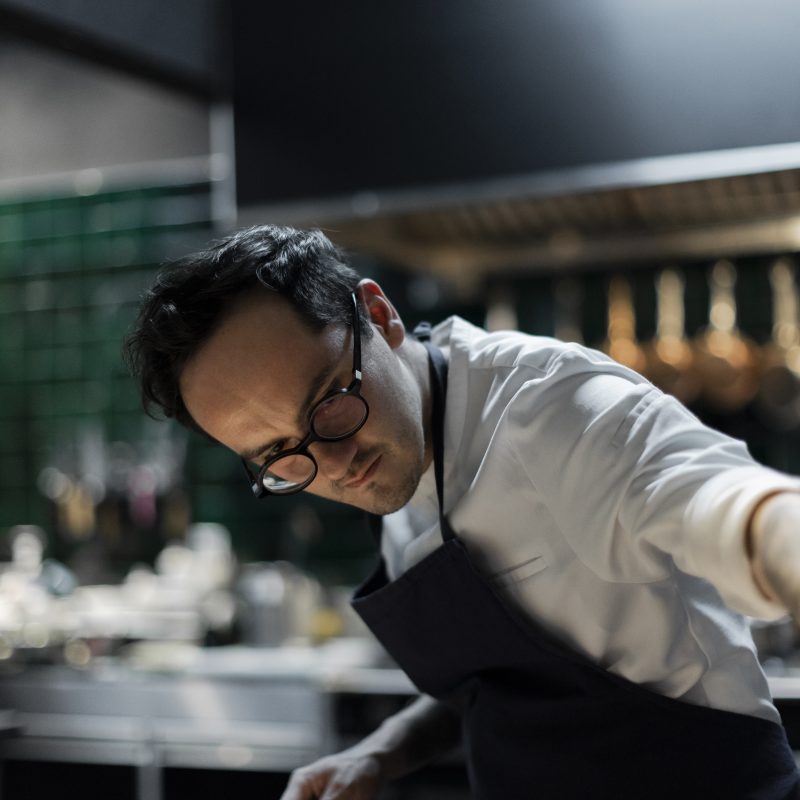

Chef Lucho Martínez
Originaire de Coatzacoalcos, Veracruz, Lucho
Martínez a vécu une partie de son enfance et de son adolescence
à Nashville, dans le Tennessee. À l’âge de 14 ans, il
s’aventure pour la première fois dans une job en cuisine.
A 17 ans, il déménage à Cancun avec pour seul objectif d’étudier la gastronomie. Il a enrichi ses compétences et engrange de l’expérience dans les cuisines de différents hôtels jusqu’à ce qu’il décide d’abandonner l’école et de se consacrer entièrement au travail de chef.
Quelques années plus tard, après s’être installé à Mexico, il s’est retrouvé au Quintonil -du chef Jorge Vallejo- et plus tard au Maximo Bistrot -du chef Eduardo García-, qu’il considère depuis comme un véritable mentor.
In 2018 and, armed with years of experience, Lucho opened Em (named after his daughter Emilia) in Mexico’s foodiest neighbourhood, Roma Norte.
Em uses known ingredients, with deep roots, in unconventional ways. From the heat of kitchen, to the speed of service, huitlacoche becomes a small tart with Ocosingo cheese; cactus, in a broth made out of fish bones; escamoles, in small round croquettes with a dash of serrano.
Its kitchen is the result of a long and dedicated process: it is the influence of different techniques, national and international, in the attempt of establishing a signature. The selection of the best product is merely the beginning of its creative process, is it a point of departure that leads us to unusual decisions, that end in dishes with soft yet intense flavours, short and long-lasting, new and known. Em is not a type of kitchen, it is an inquiry of its own style that seeks excellence.
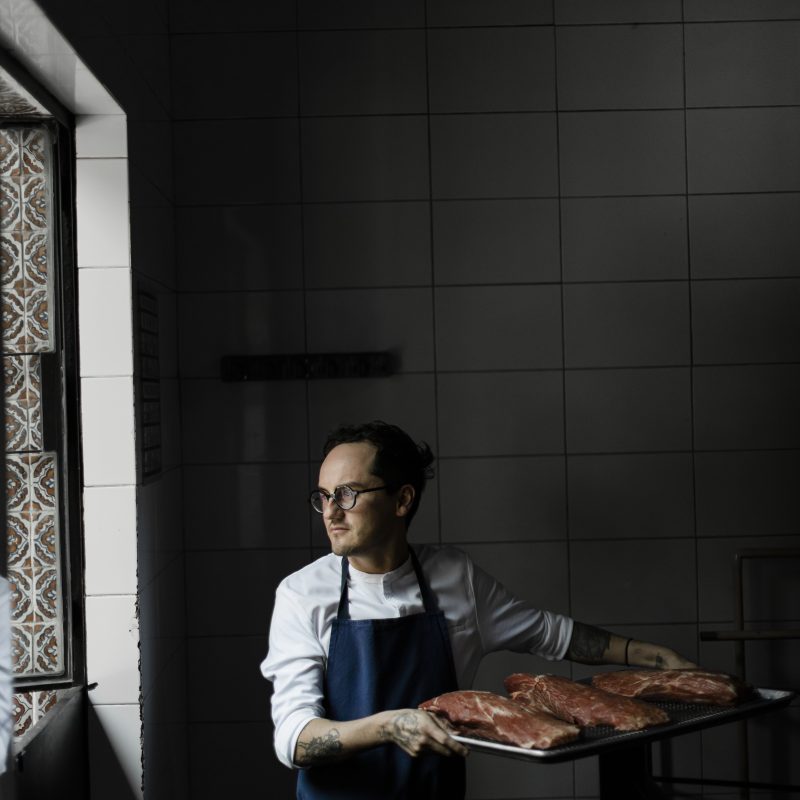

En 2018, fort de ses années d’expérience, Lucho a ouvert Em (du nom de sa fille Emilia) dans le quartier le plus foody du Mexique, Roma Norte.
Em utilise des ingrédients connus, aux racines profondes, de manière non conventionnelle. De la chaleur de la cuisine à la rapidité du service, le huitlacoche devient une petite tarte au fromage Ocosingo ; le cactus, un bouillon à base d’arêtes de poisson ; les escamoles, de petites croquettes rondes avec un soupçon de serrano.
Sa cuisine est le résultat d’un processus long et dévoué : c’est l’influence de différentes techniques, nationales et internationales, dans la tentative d’établir une signature.
La sélection du meilleur produit n’est que le début de son processus créatif, c’est un point de départ qui conduit à des décisions inhabituelles, qui aboutissent à des plats aux saveurs douces mais intenses, courtes et durables, nouvelles et connues. Em n’est pas un type de cuisine, c’est une enquête recherche de style et d’excellence.
Feeling hungry ?
check his restaurant :
@em.rest
https://itsemilia.rest/
Thanks Lucho.
Lucho Martinez
@thisislucho
www.luchomartinez.com
Pictures : Diego Padilla Magallanes
www.diegopadillaphoto.com
@diegopadillama
Au commencement /
At the beginning
Tout commence en 1796, à Morez, (a quelques kilomètres d’Oyonnax). Au fond des montagnes, c’est un petit village situé à deux pas de la Suisse. Il se trouve en plein cœur du bassin métallurgique jurassien.
Là-bas, vit le maître cloutier Pierre-Hyacinthe Cazeaux : son métier consiste à fabriquer des clous pour de multiples usages, allant des souliers au fer à cheval. En 1796, une idée ingénieuse lui vient : celle de tordre un fil métallique pour encercler des verres de correction. Mais il en a une autre : celle de concevoir des branches qui enserrent l’oreille et permettent le maintien des lunettes. La lunette moderne en métal est née.Grâce à M. Cazeaux, c’est bientôt le village entier de Morez qui se spécialise dans la confection de montures de lunettes métalliques, puis le savoir-faire s’étend au bassin voisin, Oyonnax.
It all began in 1796, in Morez (a few kilometers from Oyonnax). Deep in the mountains, this small village lies a stone’s throw from Switzerland, located in the heart of the French Jura steel belt. There lived master nail maker Pierre-Hyacinthe Cazeaux: his trade consisted in making nails used for many things, from shoes to horseshoes. In 1796, he came up with an ingenious idea: to twist a wire around corrective lenses. Then another: to design temples that encircle the ear and allow the glasses to be held in place. Modern metal eyewear was born. Soon, the entire village of Morez specialized in manufacturing metal frames and the know-how spreaded to the neighboring region of Oyonnax.
gravure UV des branches / UV engraving of the temples
improbo fabrum labore ascendit /
À Oyonnax, une devise orne les murs et habite les esprits : “improbo fabrum labore ascendit” – “elle s’est élevée grâce au travail opiniâtre de ses habitants” -.
Ses habitants ont le savoir-faire chevillé au corps : Dans cette ville, on est alors faiseur de peignes de père en fils, comme en attestent les registres de l’état civil. De faiseurs de peignes en buis puis en corne, on devient faiseurs de peignes en celluloïd. Cette nouvelle matière plastique, la toute première du genre, a été inventée à la fin du XIXe siècle. Elle présente des qualités incomparables : elle est à la fois plus souple, plus légère, plus solide et plus malléable. On s’arrache ces nouveaux peignes.
In Oyonnax, a motto adorns the walls and inhabits the spirits: improbo fabrum labore ascendit, meaning “it has risen thanks to the stubborn work of its inhabitants”.
People here have a strong sense of craftsmanship: this town has seen generations of comb makers, as the civil registry shows. First making combs out of boxwood then horn, the comb makers ended up using celluloid. This new plastic material, the very first of its kind, was invented at the end of the 19th century. It had incomparable qualities: it was more flexible, lighter, stronger and more malleable. These new combs sold like hotcakes.
/
Vérification des stocks d’acétate / Checking acetate stocks
Pour soutenir l’activité, la coopérative met en place une usine à vapeur, La Grande Vapeur. D’un genre nouveau, son organisation reste ancrée dans les racines paysannes de ses ouvriers. En effet, elle regroupe 32 cabines individuelles, chacune raccordée au moteur central. Son fonctionnement était réellement celui d’une coopérative : pour occuper ces cabines, les ouvriers devaient verser un loyer mais ils étaient, en contrepartie, indépendants. Ils pouvaient donc bénéficier de l’énergie vapeur à leur guise tout en conservant leur liberté de travail. Ces ouvriers se voyaient sous-traiter la fabrication des lunettes, de la part des marchands et c’est ainsi que la région prit son essor économique.
To support the growing activity, the cooperative set up a steam factory, “La Grande Vapeur”. This factory was of a new breed but its organization was anchored in the agrarian roots of its workers. It consisted of 32 individual booths, each connected to the central engine and functioned like a proper cooperative: to occupy these booths the workers had to pay rent, but in return they were independent. They could therefore use the steam power at will while retaining their freedom to work. These workers were subcontracted by the merchants to make eyeglasses and this is how the region took off economically.
Gabarits de découpe des verres / Lenses cutting templates
Un nouveau succès /
A new success
Mais dans les années 1920, la croissance s’essouffle : la mode des cheveux courts provoque un déclin soudain et inattendu des ventes de peignes. Les Roaring Twenties (les années folles) font souffler un vent de liberté tout droit venu des États-Unis : les actrices américaines Louise Brooks et Josephine Baker inspirent les femmes françaises. Tout comme Coco Chanel, elles arborent désormais des coupes boyish, des coupes à la garçonne. À l’époque, une femme sur trois porte les cheveux courts : le peigne devient donc un accessoire désuet. Alors on cherche à diversifier les activités : on utilise l’acétate de cellulose, successeur du celluloïd, pour produire des jouets, des pièces techniques … et des lunettes. C’est à cette époque que la vallée du Jura devient ce que l’on a ensuite nommé la Plastic Valley, c’est-à-dire un véritable bassin industriel et technologique qui continue encore aujourd’hui son envergure nationale comme mondiale. Les lunettes jurassiennes connaissent un grand succès : elles incarnent la modernité. Et elles s’exportent ! Dans les années 1950, les artisans lunetiers sont submergés par les demandes américaines : on leur commande des lunettes en acétate par milliers !
In the 1920s, however, growth started dwindling: the fashion for short hair caused a sudden and unexpected decline in comb sales. The Roaring Twenties brought a spirit of freedom straight from the United States: American actresses Louise Brooks and Josephine Baker inspired French women who, like Coco Chanel, now sported tomboyish cuts. At the time, one in three women wore their hair short and combs became obsolete. The region therefore tried to diversify its activities: cellulose acetate, the successor to celluloid, was used to produce toys, technical parts and… eyeglasses. It was at this time that the Jura valley became what was later called “Plastic Valley”, a true industrial and technological zone of national and global caliber. Jura eyewear became a great success: it embodied modernity and exported well. In the 1950s, eyewear manufacturers were overwhelmed by American demand and had to fulfill orders of acetate glasses by the thousands.
/
/
Dernières vérifications et polissage des montures / Final checks and polishing of the frames –
Le challenge de la délocalisation /
The challenge of relocation
Ce parcours, c’est celui de notre usine principale, Lucal, dont les origines remontent en 1900 et la fabrication de peignes et barrettes. Lucal connaît aussi la folie des années 50 jusqu’à son apogée, en 1980, où cette entreprise familiale compte désormais 400 employés et travaille avec des grands noms de la mode comme Lanvin et Chloé. Comme beaucoup d’autres hélas elle connaîtra le déclin dû à la délocalisation croissante des ateliers de production : Taïwan, Hong-Kong ou encore le Japon proposent des modèles moitié moins chers. Ce déclin s’accentue encore avec l’ouverture commerciale de la Chine. Les grandes maisons les premières ont quitté le navire pour le pays du milieu où les coûts de production y étaient moindres. Dos au mur, certains ateliers ont été contraints d’y délocaliser une partie de leur production. C’est dans ce contexte difficile qu’est né le deuxième de nos fabricants : Optisun.
En 1980, Edmond Maitre, décide de créer ses propres lunettes :. À l’époque, c’est dans son garage qu’il construisait les prémices du savoir-faire d’Optisun. En 1985, l’entreprise est née et comptabilise 10 salariés. En 1990, son fils Olivier rejoint l’entreprise. Il comprend rapidement que la modernisation de l’outil de production est nécessaire pour faire vivre la lunette et le savoir-faire Français, chers à son cœur. C’est ainsi que l’entreprise fabrique ses propres machines à commandes numériques pour moderniser l’usine et apporter de nouvelles techniques et procédés de fabrication. Ces efforts positionnent aujourd’hui Optisun comme une usine dont le fruit du travail est admiré partout dans le monde.
This journey mirrors that of LUCAL, our main factory, whose origins date back to 1900 and the manufacturing of combs and barrettes. LUCAL also went through the madness of the 1950s and reached its peak in 1980. At the time, this family-owned business employed 400 people and worked with big names in fashion such as Lanvin and Chloé. Sadly, like many others, LUCAL experienced a decline due to the increasing relocation of production workshops: Taiwan, Hong Kong and Japan offered products that were half the price. This decline became even more pronounced with the opening up of China’s trade. Large manufacturers were the first to jump ship and relocate to China, where production costs were lower. With their backs to the wall, some smaller workshops were forced to relocate part of their production there. It was in this difficult context that the second of our manufacturers was born: Optisun.
In 1980, Edmond Maitre decided to create his own glasses. At the time, he was working from his garage to build Optisun’s expertise. In 1985, the company was founded and had 10 employees. In 1990, his son Olivier joined the company. He quickly realized that the modernization of the production tools was necessary if he were to keep French eyewear and know-how alive, an endeavor dear to his heart. This is why the company manufactures its own CNC machines to modernize production and introduce new manufacturing techniques and processes. These efforts have positioned Optisun as a manufacturer whose work is acclaimed around the world.
Machines d’usinage 5 axes et machine de découpe des verres / 5-axis machining and glass cutting machine
Un futur radieux /
A bright future ahead
La modernisation, l’excellence et l’innovation sont ces mêmes clefs qui on permit à Lucal de subsister et de rebondir: avec à son bord des profils comme ceux Christian Girard et David Rondelet, tous deux Meilleurs Ouvriers de France, l’entreprise cultive un savoir-faire rare qui attire jusque dans les plus grands noms du luxe Français : Cartier par exemple, choisi Lucal pour la fabrication de ses montures. Avec la COVID et la prise de conscience des faiblesses de notre industrie, le made in France fait son grand retour en force. Avec lui, grandit l’idée d’une consommation plus raisonnée qui promet à la région un bel avenir. Ce savoir-faire, cet héritage, mais aussi l’envie d’innover sont les clefs de notre production: raisonnée et locale, elle repose sur l’expérience de partenaires qui nous font confiance depuis nos premiers jours.
Modernization, excellence and innovation are the same cornerstones that have enabled LUCAL to survive and bounce back: with people such as Christian Girard and David Rondelet on board – both Meilleur Ouvrier de France (“Best Craftsmen in France”, an elite group of professionals) – the company cultivates a unique know-how that attracts even the greatest names in French luxury. Cartier, for example, chose LUCAL to manufacture its frames. With COVID and the awareness of our weaknesses, the “Made in France” industry is making a comeback. In its wake grows the idea of a more sustainable consumption, which promises a bright future for the region. This expertise and legacy, as well as the desire to innovate are the keys to our production: sustainable and local, it is based on the experience of partners who have trusted us since our beginnings.
Christian Girard – Meilleur ouvrier de France
Christian Girard – Best Craftsmen in France

Espace de prototypage – Prototyping area
Faces en production – Fronts in production
Galets de polissage – Polishing pebbles
Cet article n’aurait pas été possible sans la participation des usines Lucal et Optisun ainsi que tout leur aimable personnel. Sans Jim Rosemberg pour la photographie ainsi qu’Alexis Kaiser pour les traductions. Merci à tous.
Guillaume Thuau – Co-fondateur BAARS
This article would not have been possible without the participation of the Lucal and Optisun factories and all their kind staff. Without Jim Rosemberg for the photography and Alexis Kaiser for the translations. Thanks to all of them.
Guillaume Thuau – BAARS’ co-founder
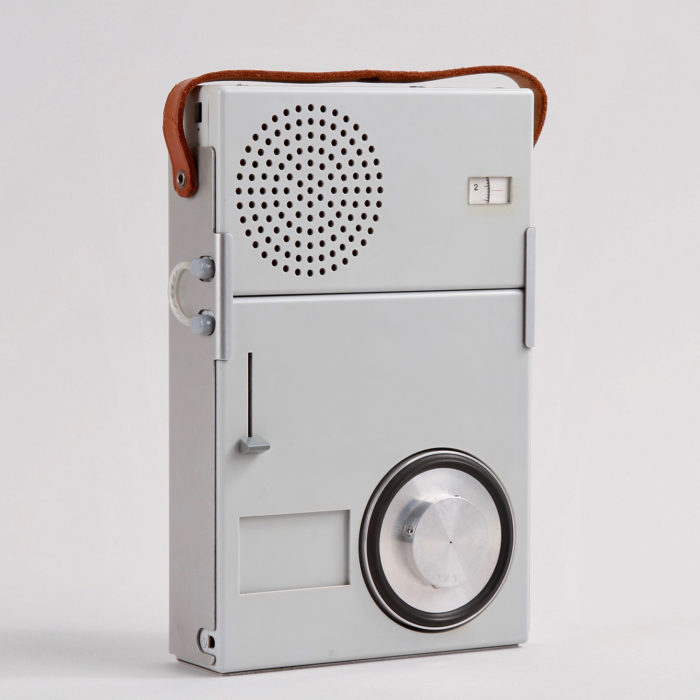
A good design … /
- Is innovative
To answer the day to day challenges of glasses wearers, BAARS has created, patented & use the only magnetic hinge in the world.
- Makes a product useful
Thanks to its magnetic connection BAARS’ hinge limits the risk of breakage, wear & discomfort. It’s not a gimmick or a joke, it’s our answer to challenges that we noted on glasses wearers.
- Is aesthetic
Every frame is drawn and prototyped several times until the perfect ratio is reached, that is in proportion and works perfectly on the face. Our goal is to make simple and beautiful products.
- Makes a product understandable
With only two parts to create the hinge, BAARS has found the easiest system to understand. The physicall answer we provide is only driven by the fonction, making our product clear.
- Is unobtrusive
Our glasses are not fashion accessories, or pieces of art. They’re neither decorative object. They meant to serve a purpose, be confortable and make the wearer happy, living in harmony with his face & body. In this sense, they are indeed beautiful pieces of eyewear.
- Is honest
All our products are designed to make your life simpler. All our products are made in France with respect to every signal manufacturer & material used. We don’t pretend anything else that what we do: smart, sustainable products.
- Is long-lasting
Our magnets have a life of around 100 years, never losing strength. Take care of them, they will take care of you 😉
- Is thorough down to the last detail
The hinge is not the only piece of design on our frames. Nose pads, temples, weight & balance, material … Everything is thought of to make your life better .
- Is environmentally friendly
All our products are made in France, and delivered with 100% carbon neutral shipment. We use only premium natural mazzucchelli acetate.
- Involves as little design as possible
Shapes, hinge, packaging… less is more. We put all our effort in delivering efficient & minimalist solutions.

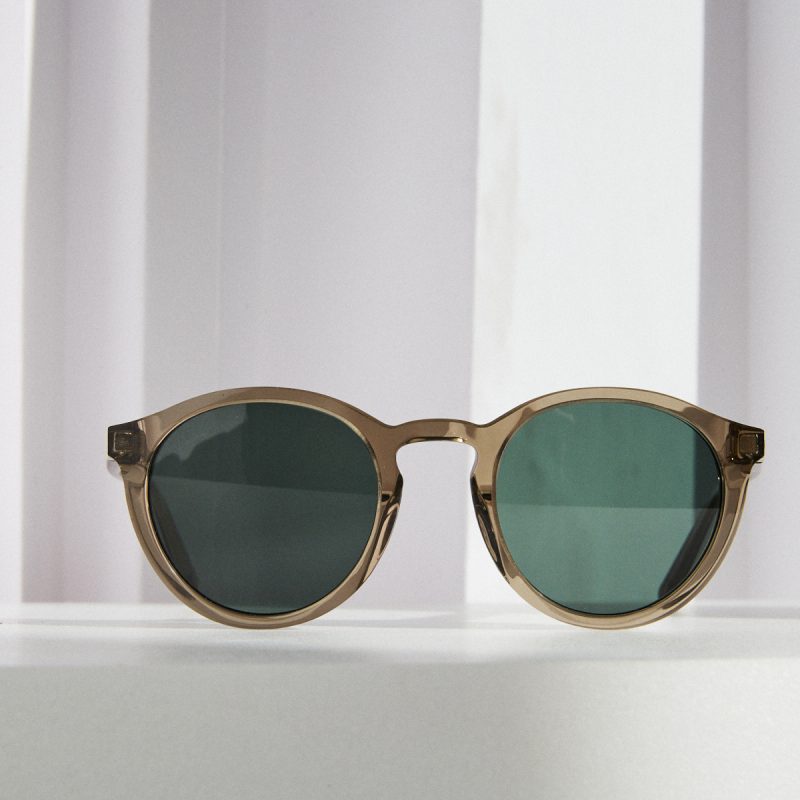
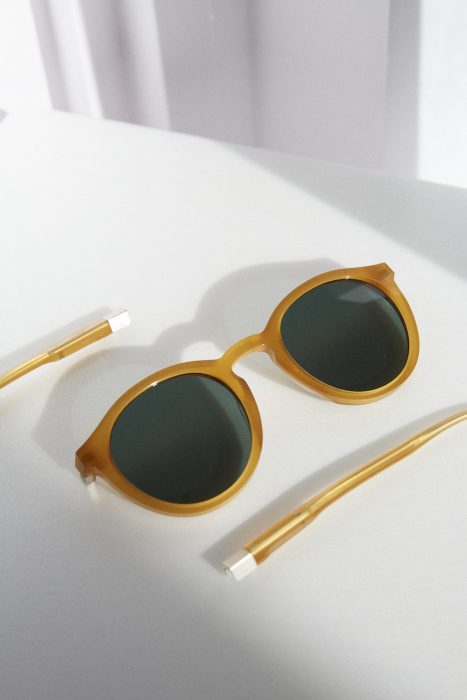

/

